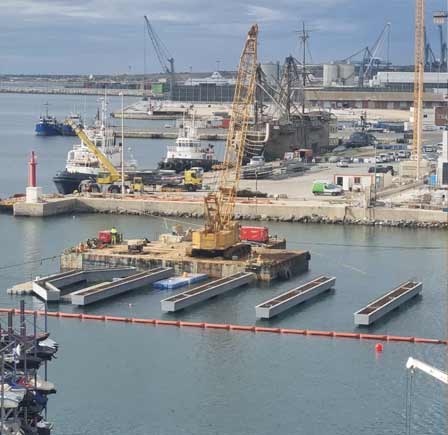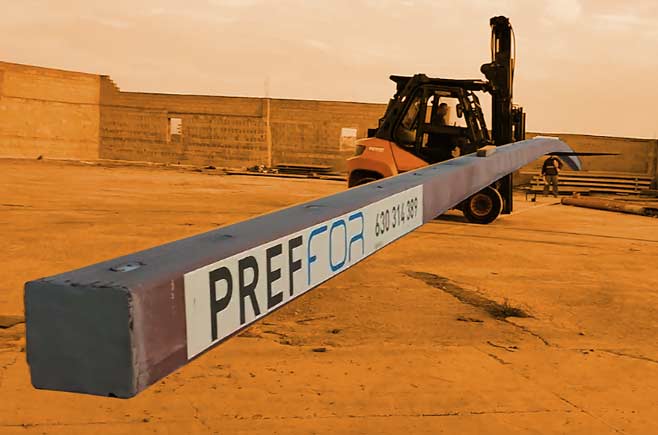UHPC is full of unexplored, unexploited and sometimes unexpected possibilties. If you are reluctant to believe that, read this post! It talks about an innovative project in which we are currently involved, in which UHPC is the main character: the SELMUS project.
The key of this project may be found in being able to think beyond what it is already established, to take concrete beyond conventional beliefs, to make a bold idea possible. Who would have thought that concrete could be used to design an offshore floating structure for bivalve molluscs cultivation? Who would have imagined that UHPC is the most suitable material to solve the current problems of this sector? Who could have guessed that UHPC could make this sector a more sustainable and competitive one? SELMUS Project did.
The most widespread mussel farming system in sheltered waters is the raft. A farming raft is a wood-made floating grid structure forming a platform which is used to hang ropes of about 10-m length. At their bottom, mussels are placed for its growing. You can see a traditional wood-made raft in the picture below.

Even though this system has existed for more than one hundred years, it is currently facing some problems which are necessary to overcome, such as:
- High maintenance costs, as the wood gets rotten and cracks at joints
- Difficulties to find suitable trees to obtain 27-m length girders
- Large delivery times
- Necessity of preserving a non-native tree species as eucalyptus
- Cutting of a large amount of trees each year
Lack of innovation in this sector has led to a decrease of 16% of the European mussel production in the period 2000-2015. The SELMUS project aims to recover the European sector leadership through an innovative raft, and it is focused on Spain, the 3rd mussel world producer in the world and the 1st one in Europe. So the question is, how?
Rafts are made of eucalyptus wood not by chance, but because among all existing materials tried on, it has shown the best performance. The thing is: rafts are made of wood because it does not exist something better so far.
- Steel is too stiff and does not adapt to wave movement, leading to prouction losses
- Concrete is too massive, too stiff and also cracks, reducing its lifespan
- Polyethylene is too flexible, increases its deformation over time, and is yet expensive
It is important to realise that a raft is not more or less flexible simply by the material used to made it, but for a combination of the (i) material used, (ii) geometry of the beams and girders used, and (iii) their connection. Even though the previous list may be put into questions in some specific cases, the truth is that geometry is quite often determined by the material. This fact is very to important to understand why UHPC arises as a suitable alternative to wood.
Despite UHPC is as stiff as any concrete, it allows the design of slender and low-depth girders which leads to an overall stifness similar to the wood-made raft. Why is that possible? The reason must be found in two main parameters: strength and low permeability.
If compared to conventional concrete, its larger compressive and tensile strength makes a 70% mass reduction possible, increasing its flexiblity withouth cracking.
If compared to the rest of materials, its almost zero porosity and the fact that it does not crack under service conditions makes it a long lasting material even inside a marine environment.
If compared to wood, carbon footprint has been estimated in 100 times lower, quality of the girders are stable since they are produced under a standar and controlled process, also reducing delivery times.
Project SELMUS was meant to prove all of that by floating 5 UHPC prototypes in different locatioins in the Spanish coast. The first one, called the Celtus raft, was floated in March 2016 in O Grove (Galicia, Spain), thanks to the innovative spirit of Barlovento S.A. and the collaboration of Forjas del Salnés S.L. Live broadcast of the current state of the Celtus raft can be checked here.
In the following movie you can see the Celtus raft and also several wood-made rafts in the area. Can you tell which is one?





